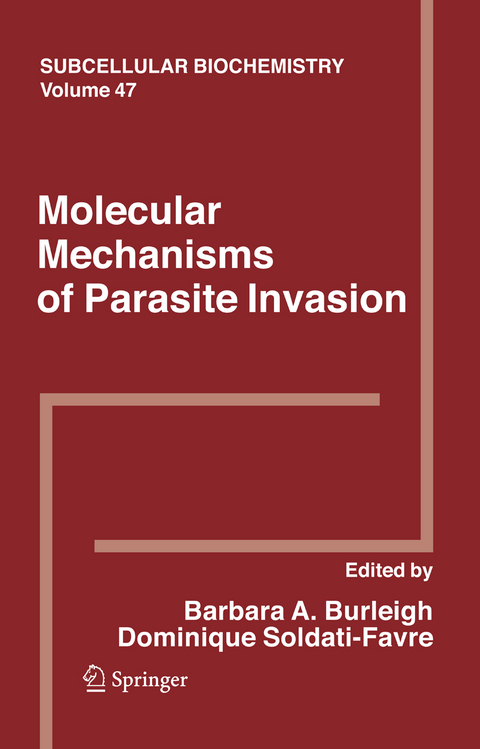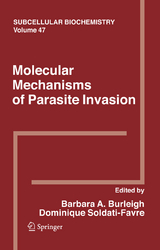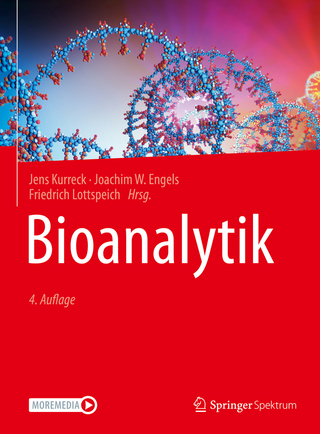Molecular Mechanisms of Parasite Invasion
Springer-Verlag New York Inc.
978-0-387-78266-9 (ISBN)
All of the parasitic organisms highlighted in this new book represent medically important human pathogens that contribute significantly to the global burden of disease. As such there is intense interest in understanding the molecular basis of infection by these pathogens—not only with regard to their clinical relevance but also the fascinating biology they reveal. For most of the parasites discussed here the ability to penetrate biological barriers and/or to establish intracellular residence is critical to survival of the pathogen in the mammalian hosts. For other parasites, a tissue invasive phenotype is a key virulence determinant. In the ensuing 18 chapters, select members of this diverse set of protozoan parasites, as well as some examples of the extremely reduced fungal parasites classified as Microsporidia, are discussed within the context of the fascinating molecular strategies employed by these organisms to migrate across biological barriers and to establish residence within target host cells.
Tools and Experimental Approaches.- Current and Emerging Approaches to Studying Invasion in Apicomplexan Parasites.- Receptor-Ligand Interaction.- Microneme Proteins in Apicomplexans.- Erythrocyte Invasion by Plasmodium falciparum: Multiple Ligand-Receptor Interactions and Phenotypic Switching.- Role of the gp85/Trans-Sialidase Superfamily of Glycoproteins in the Interaction of Trypanosoma cruzi with Host Structures.- Signaling Pathways.- Calcium Regulation and Signaling in Apicomplexan Parasites.- Trypanosoma cruzi: Parasite and Host Cell Signaling during the Invasion Process.- Actin Dynamics: Host and Parasite.- Host Cell Actin Remodeling in Response to Cryptosporidium.- Host Cell Actin Remodeling in Response to Trypanosoma cruzi: Trypomastigote Versus Amastigote Entry.- Actin/Myosin-Based Gliding Motility in Apicomplexan Parasites.- Proteases.- Roles of Proteases during Invasion and Egress by Plasmodium and Toxoplasma.- Roles of Naturally Occurring Protease Inhibitors in the Modulation of Host Cell Signaling and Cellular Invasion by Trypanosoma cruzi.- The Parasitophorous Vacuole.- Biogenesis of and Activities at the Toxoplasma gondii Parasitophorous Vacuole Membrane.- The Role of Host Cell Lysosomes in Trypanosoma cruzi Invasion.- Leishmania Invasion and Phagosome Biogenesis.- Penetrating Biological Barriers.- Plasmodium Sporozoite Passage across the Sinusoidal Cell Layer.- Transepithelial Migration by Toxoplasma.- The Microsporidian Polar Tube and Its Role in Invasion.- Intestinal Invasion by Entamoeba histolytica.
| Reihe/Serie | Subcellular Biochemistry ; 47 |
|---|---|
| Zusatzinfo | 4 Illustrations, color; 48 Illustrations, black and white; XX, 237 p. 52 illus., 4 illus. in color. |
| Verlagsort | New York, NY |
| Sprache | englisch |
| Maße | 165 x 248 mm |
| Themenwelt | Medizin / Pharmazie ► Studium |
| Naturwissenschaften ► Biologie ► Mikrobiologie / Immunologie | |
| Schlagworte | Biochemie |
| ISBN-10 | 0-387-78266-4 / 0387782664 |
| ISBN-13 | 978-0-387-78266-9 / 9780387782669 |
| Zustand | Neuware |
| Haben Sie eine Frage zum Produkt? |
aus dem Bereich




